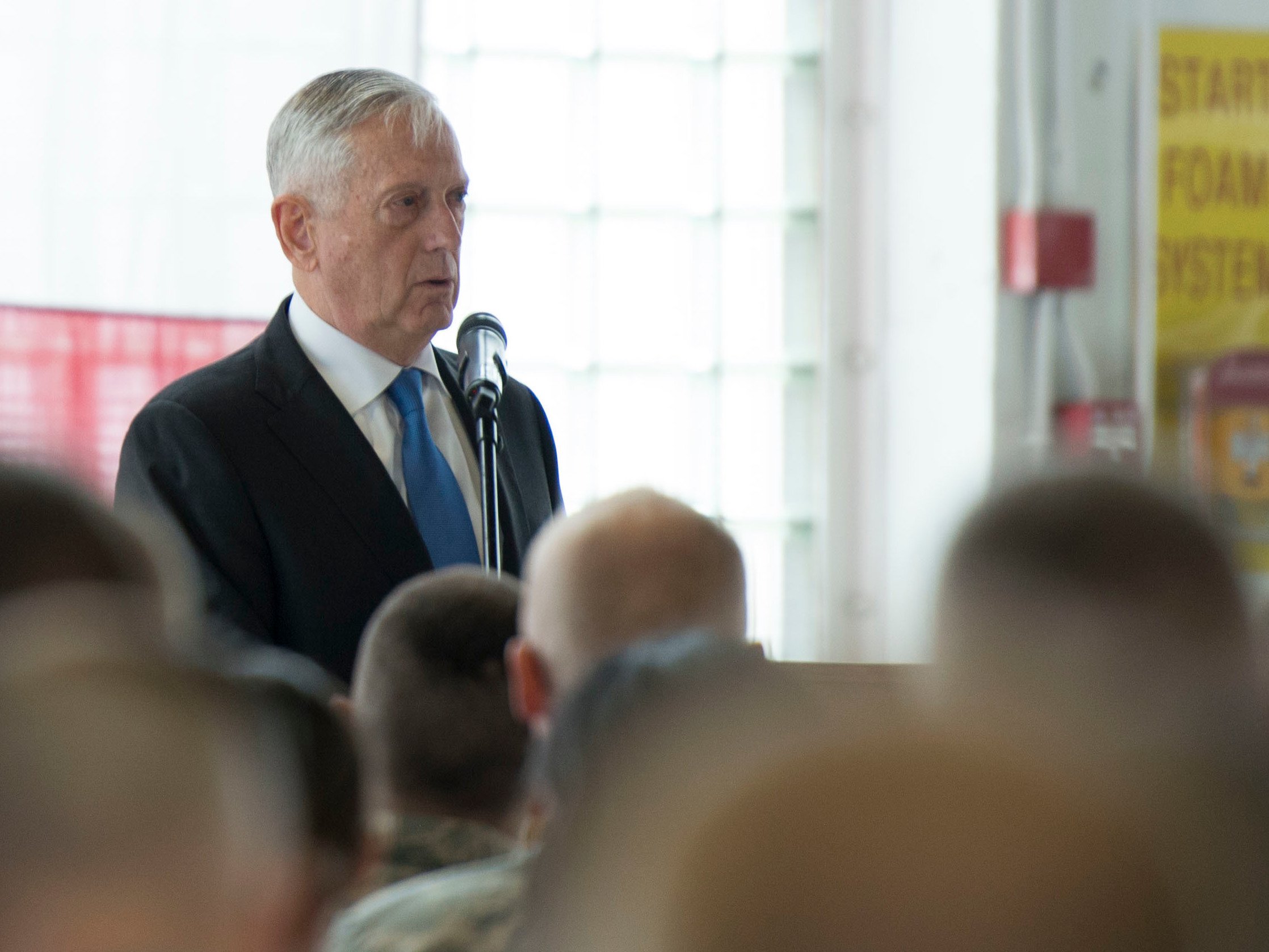
THE PENTAGON — During Friday morning’s rollout of his new National Defense Strategy, Defense Secretary James Mattis summed up the document succinctly. “Everything we do must contribute to the lethality of our military. We cannot expect success fighting tomorrow’s conflicts with yesterday’s weapons or equipment.”
Since taking over the helm at the Pentagon a year ago, Mattis has time and again used a single word, “lethality,” to describe his vision for how to move the armed forces forward to meet the challenges of a new era of great power competition. The new strategy reflects that vision, while putting the nation’s defense apparatus on what amounts to war footing.
Speaking to reporters at the Pentagon on Thursday, one of the key architects of the new strategy warned against thinking of the document as a “pivot.” The United States is not moving away from any one fight and toward new ones. Rather, said Elbridge Colby, the Pentagon’s deputy assistant secretary for strategy and force development, the idea is that military leadership is focusing on accelerating programs and ideas that languished in old strategies and were never implemented, and is pushing the defense industry and a calcified acquisition system to develop – and field – cutting-edge technologies.
The document says the United States must quickly move past “a period of strategic atrophy” in which Washington focused more on regional threats than great power competition.
The issue of the Pentagon’s eroding military advantages over adversaries is a major thrust of the paper. The unclassified 11-page version of the larger 40-page document doesn’t go into detail about specific technologies, but it is clear that the Pentagon is preparing to move out quickly to shore up advantages against the growing Chinese military capabilities in the South China Sea.
Watch: #SecDef Mattis discusses the #NationalDefenseStrategy at @SAISHopkins. #Periscope https://t.co/CNNqld5pZI
— U.S. Dept of Defense (@DeptofDefense) January 19, 2018
Listening to Mattis and other military officials over the past year, it has been clear that while U.S. troops are still in the fight against terrorist groups in Afghanistan, Iraq, and Syria, their real concerns are the military advances being made by China and Russia, along with the ballistic missile and nuclear threats posed by North Korea and Iran.
The new strategy underlines that concern and hammers it home. “Inter-state strategic competition, not terrorism, is now the primary concern in U.S. national security,” according to the report.
It also makes perfectly clear who is driving that competition, and where. The document paints China as a true global power, with the economic might to coerce and compel neighbors and trading partners to bend to its will, while Russian influence is more limited, according to the document.
Militarily, “China is not as overtly brazen,” Colby said. Moscow has invaded both Georgia and Ukraine in recent years, and continues to wage a low-level war in eastern Ukraine while propping up the Assad regime in Syria. The Chinese are expanding their influence in a different way, “but it is militarizing the South China Sea and has embarked on a military modernization program that is in deep contravention to our interests,” Colby added.
Russia, however, “is operating from a much more limited base. There’s a limitation of economic resources and power.”
The strategy also recognizes that the militaries of other nations are making rapid use of commercial technologies, while the Pentagon is mired in a slow-moving, cumbersome, Cold War-era acquisition system.
To maintain the American advantage, “will require changes to industry culture, investment sources, and protection across the National Security Innovation Base,” according to the paper.
The paper lays out three lines of effort to maintain the eroding ability of the United States to overwhelm its adversaries. The first is “rebuilding military readiness,” something that the 2018 Pentagon budget has attempted to do. Second is “strengthening alliances as we attract new partners,” and third, “reforming the department’s business practices.”
One way to deter potential adversaries is to build and maintain a robust alliance network, albeit one that share costs, an obvious nod to President Donald Trump’s demand that long-standing friends spend more on defense.
“We do need more equitable relationships” with allies, said Colby, who led the team writing the document. He added that the strategy aims to show allies two things: “we’re here to stay,” but “there’s a practical reality that we need to be able to do things together, be more interoperable, and divide up missions.”
Much of this thinking has been telegraphed by military leaders over the past several months. Speaking at a conference in India this past week, Adm. Harry Harris, head of the U.S. Pacific Command, said that the United States “must be willing to take the tough decisions to ensure the Indo-Pacific region and the Indian Ocean remain free, open and prosperous. This requires like-minded nations to develop capacities, leverage each other’s capabilities.”
As Mattis has said, the basics of the new strategy are nothing new. Rather, the Pentagon is looking to move past its fixation with combating shadowy terrorist groups and recognize that America’s traditional military advantages against other nation-states is eroding.
And when it comes to reversing course, Colby said, “we have to get back to the basics of preparing for war.”





